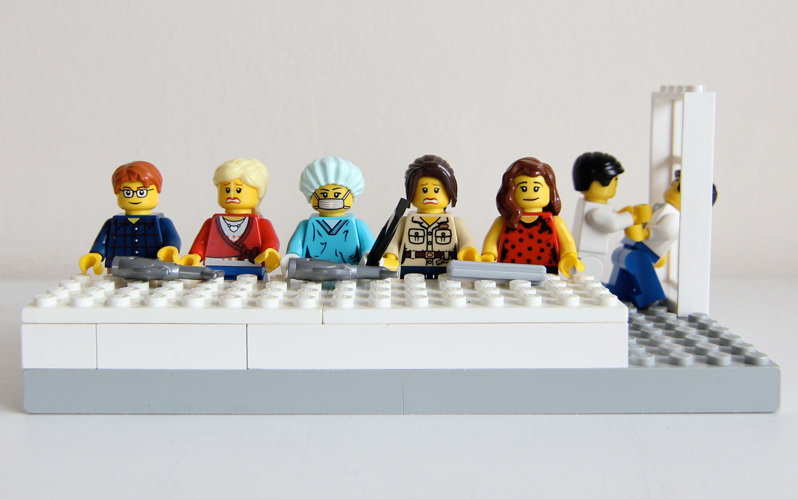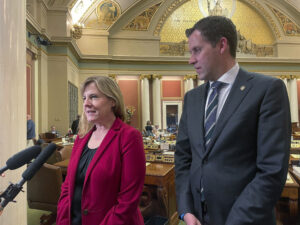Minimum Truth: The Hollow Argument Against Higher Wages
In the midst of a crucial political debate that plainly favored proponents of a higher minimum wage, the Congressional Budget Office dropped a bombshell headline last week. followthethings.com (CC BY-NC-SA 2.0)
followthethings.com (CC BY-NC-SA 2.0)
In the midst of a crucial political debate that plainly favored proponents of a higher minimum wage, the Congressional Budget Office dropped a bombshell headline last week. Increasing the minimum to $10.10 an hour — as demanded by President Barack Obama and Democrats on Capitol Hill — would “cost 500,000 jobs.” At a moment when employment still lags badly, this assertion was potentially devastating.
Almost lost in much of the predictable media coverage was the CBO report’s estimate that a minimum-wage increase would lift at least 900,000 workers and their families out of poverty — and boost incomes for at least 15 million more.
But as top economists have repeatedly pointed out, such damning employment numbers are fuzzy and unreliable, while the CBO poverty numbers probably underestimated the positive impact of a higher minimum.
Moreover, those 500,000-jobs-lost headlines were highly misleading, with the strong implication that more than half a million actual people would be laid off — which is wrong. In fact, the CBO number is meant to estimate the number of jobs employers might not fill when workers leave, or the number of jobs employers might not create as quickly if they must pay a higher wage. It doesn’t mean that people will lose their current jobs, but that those people seeking low-wage jobs may have to look slightly longer to find them.
What about that nice round number of 500,000? Naturally it is rounded to the nearest hundred thousand, but more to the point is that the headlined number is simply the midpoint of an estimated range from “slight impact” or zero lost jobs on the low end to one million on the high end.
Such a million-job spread represents substantial uncertainty. Skeptics may consider the uncertainty even greater because the CBO report relied heavily on disputed assumptions by conservative economists — and diverged from the consensus of top U.S. economists, who expect that moderate increases have a vanishingly small impact on employment.
But even if 500,000 fewer jobs are created in the short run, that somewhat notional cost must be weighed against the indisputable benefit to low-wage workers. As economist Dean Baker explains:
With 25 million people projected to be in the pool of beneficiaries from a higher minimum wage, this means that we can expect affected workers to put in on average about 2 percent fewer hours a year. However when they do work, those at the bottom will see a 39.3 percent increase in pay.
While overstating the negative effect of raising the minimum wage on jobs, the CBO study understated the positive effect on families living in poverty. Its estimate of 900,000 families lifted above the poverty line is based solely on computer simulations. But historical research into the effect of previous minimum-wage increases suggest a much more robust benefit to the working poor.
According to University of Massachusetts economist Arindrajit Dube, who has studied the effects of minimum-wage increases in recent decades, the impact on poverty is much more powerful than the CBO suggests. He quotes a study by The Hamilton Project, a centrist economic think tank based at the Brookings Institution, which suggests that as many as 35 million families will benefit from an increase to $10.10 an hour due to “spillover effects” raising income among workers who already make slightly more than the minimum.
Dube’s studies of the historical effect of past minimum-wage increases indicate that raising the federal minimum to $10.10 would lift somewhere between 4.6 and 6 million households above the poverty line.
Raising the minimum wage will also reduce profiteering by large, highly profitable employers, like Wal-Mart and McDonalds, whose workers rely on government benefits — such as the Earned Income Tax Credit and food stamps — to supplement inadequate paychecks. Survey after survey reflects the strong public appetite for higher wages at the low end. But popular approval is not the only way companies can actually benefit from improving workers’ earnings and livelihoods.
The Gap clothing chain just announced that its workers will soon receive better pay to bring them above the current federal minimum. Announcing that his company will voluntarily raise its lowest-paid workers to $9 this year and $10 next year, Gap CEO Glenn Murphy said he regards the expense as a “strategic investment” that would pay for itself many times over in better productivity and morale (as well as lower job turnover and training costs).
When the clear social benefits of raising wages are contrasted with the dubious warnings of lost jobs, there is no real argument. If we intend to address poverty and reduce inequality, higher wages across the workforce are imperative — but especially at the bottom.
© 2014 CREATORS.COM
Your support matters…Independent journalism is under threat and overshadowed by heavily funded mainstream media.
You can help level the playing field. Become a member.
Your tax-deductible contribution keeps us digging beneath the headlines to give you thought-provoking, investigative reporting and analysis that unearths what's really happening- without compromise.
Give today to support our courageous, independent journalists.






You need to be a supporter to comment.
There are currently no responses to this article.
Be the first to respond.